main
Two Types of Pottery Wheel: Help You Find the Right One Fast
Have you been developing a liking for pottery lately? And are you in need of a step-by-step guideline as to buy a suitable pottery wheel? Well, we have got you covered, future potters!
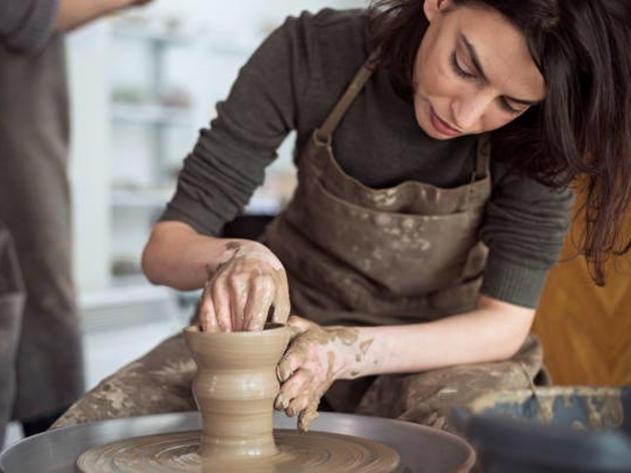
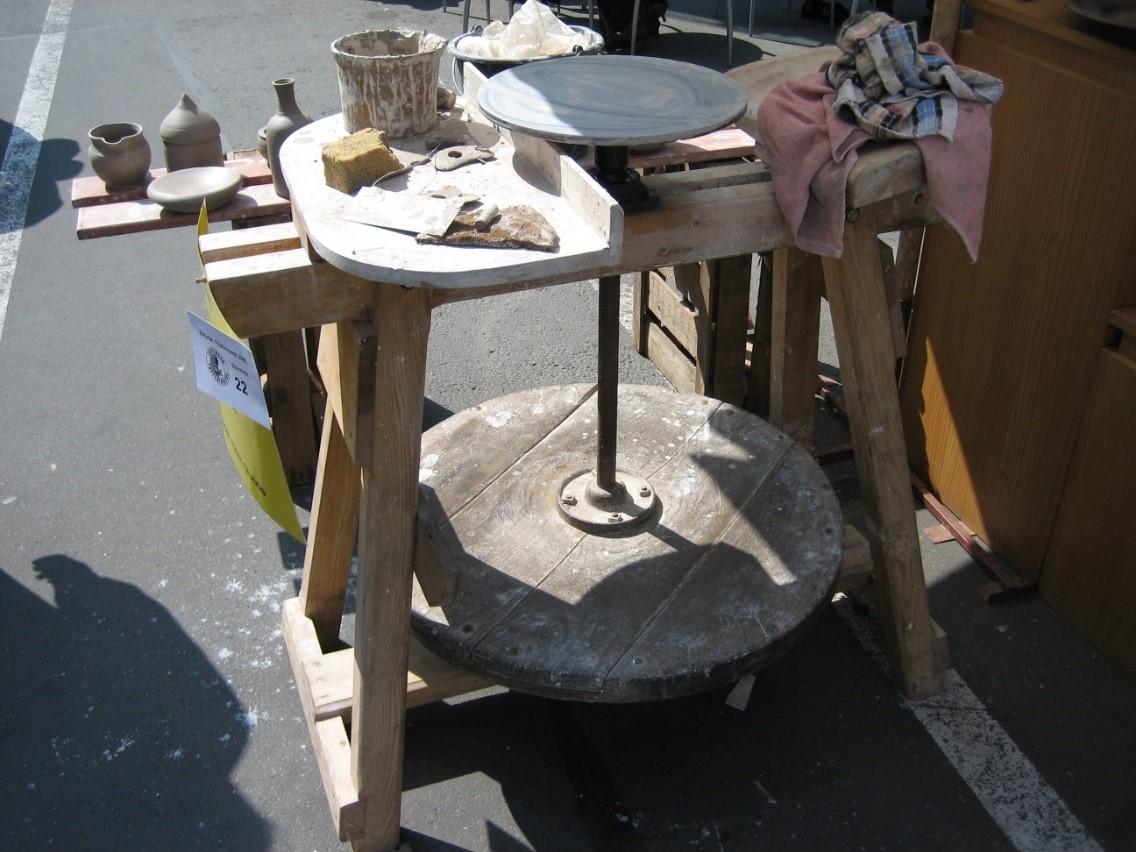 The classic, manual pottery wheel, which can last a lifetime, with almost no maintenance needed, and the only thing needed to power it, is YOUR FOOT as it is a KICK-wheel.
It typically consists of an adjustable seat, a work table in the front, a wooden or steel frame, and an aluminum wheel head with a usual cast of 14 inches. While the heavy flywheel is kicked into motion and then slowed down accordingly by the artist’s foot, it would give your studio the vintage aesthetic of ancient times and old traditions. That is one of the many reasons it is preferred over the second type of pottery wheel by the studio potters typically.
The classic, manual pottery wheel, which can last a lifetime, with almost no maintenance needed, and the only thing needed to power it, is YOUR FOOT as it is a KICK-wheel.
It typically consists of an adjustable seat, a work table in the front, a wooden or steel frame, and an aluminum wheel head with a usual cast of 14 inches. While the heavy flywheel is kicked into motion and then slowed down accordingly by the artist’s foot, it would give your studio the vintage aesthetic of ancient times and old traditions. That is one of the many reasons it is preferred over the second type of pottery wheel by the studio potters typically.
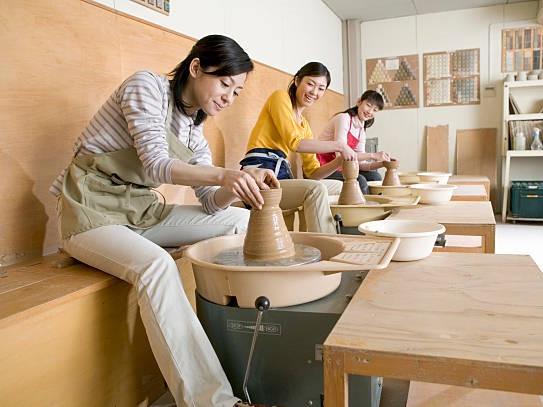
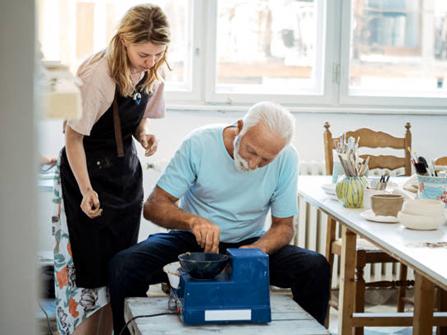 Now comes the type of wheel that revolutionized the world of pottery, making it common among craft potters and educational institutions. It is also known as the “Motor-driven Pottery Wheel.” Electric pottery wheels have proved to be a very productive and practical application of technology in the art of pottery.
The three basic components of an electric pottery wheel are:
Now comes the type of wheel that revolutionized the world of pottery, making it common among craft potters and educational institutions. It is also known as the “Motor-driven Pottery Wheel.” Electric pottery wheels have proved to be a very productive and practical application of technology in the art of pottery.
The three basic components of an electric pottery wheel are:
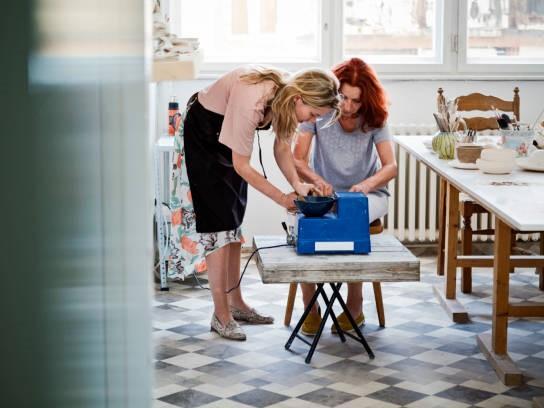
Kudos to your taste!
Molding clay and ceramic materials into pots, vessels, and other designs, which are durable, is “Pottery.” Since you are reading my blog post, it already means you do have a fondness for pottery, and even if, a beginner, as you may be, kudos to your taste and choice of art! (claps), it is one of the oldest human inventions and forms of art that stemmed from a necessity back then, as it was used to make cooking utensils. Its invention dates back to the Neolithic period (the final division of the Stone Age, almost as old as 29000BC). Before jumping into the details, here’s to let you know that this liking for pottery soon turns into a passion, and a therapeutic hobby, as soon as you get your hands on a good pottery wheel to start with. Many have used this art to earn their livings since pottery is primarily utilitarian and a crossroad where functionality meets aesthetics and decorative arts. What’s better in this world than to have a career in which you thoroughly enjoy doing? However, many beginners lose interest in this art for not choosing the right pottery wheel. So, knowing the basics and features of both types of pottery wheels is of great importance.
A pottery wheel (Choosing the right type and everything a beginner needs to know)
There are TWO types of a “Potter’s Wheel,” “Pottery Wheel,” or “Potter’s Lathe”:- Kick-wheel (Nonmotorized wheel)
- Electric Wheel (Motorized wheel)
Kick-wheel
 The classic, manual pottery wheel, which can last a lifetime, with almost no maintenance needed, and the only thing needed to power it, is YOUR FOOT as it is a KICK-wheel.
It typically consists of an adjustable seat, a work table in the front, a wooden or steel frame, and an aluminum wheel head with a usual cast of 14 inches. While the heavy flywheel is kicked into motion and then slowed down accordingly by the artist’s foot, it would give your studio the vintage aesthetic of ancient times and old traditions. That is one of the many reasons it is preferred over the second type of pottery wheel by the studio potters typically.
The classic, manual pottery wheel, which can last a lifetime, with almost no maintenance needed, and the only thing needed to power it, is YOUR FOOT as it is a KICK-wheel.
It typically consists of an adjustable seat, a work table in the front, a wooden or steel frame, and an aluminum wheel head with a usual cast of 14 inches. While the heavy flywheel is kicked into motion and then slowed down accordingly by the artist’s foot, it would give your studio the vintage aesthetic of ancient times and old traditions. That is one of the many reasons it is preferred over the second type of pottery wheel by the studio potters typically.
5 Reasons you SHOULD buy a kick-wheel

- Manual Operation
- Low Maintenance and High Durability
- Kind to the Ears!
- Easy Switch of Rotations
- Old school and Conventional equipment
5 Reasons you should NOT buy a Kick-wheel
Here are some CONS of buying a kick wheel, coupled with some common complaints I have encountered while interacting with kick wheel users.- Hard to move
- Need greater space
- Physically Demanding over Prolonged use
- Multitasking
- Requires more Practice
Electric Wheel
 Now comes the type of wheel that revolutionized the world of pottery, making it common among craft potters and educational institutions. It is also known as the “Motor-driven Pottery Wheel.” Electric pottery wheels have proved to be a very productive and practical application of technology in the art of pottery.
The three basic components of an electric pottery wheel are:
Now comes the type of wheel that revolutionized the world of pottery, making it common among craft potters and educational institutions. It is also known as the “Motor-driven Pottery Wheel.” Electric pottery wheels have proved to be a very productive and practical application of technology in the art of pottery.
The three basic components of an electric pottery wheel are:
- Wheel-head
- Frame
- Power-source.
- Power (Capacity)
- Diameter, material, and configuration of wheel-head
- Loudness
- Speed adjustment.
- The direction of rotation.
- Removable bat pins or basins.
5 Reasons you SHOULD buy an electric pottery wheel

- Portability
- Space and Storage
- A broader range of Variety
- Handy to Use
- Better Handling of Heavy Clay
5 Reasons you should NOT buy an electric pottery wheel
Now let’s just quickly jump into some of the cons or downsides of an electric pottery wheel, which the kick wheel-fans probably cannot stand at all:- Shorter Life Span
- High Maintenance and Bit of Extra Love!
- Vulnerability to Water
- Noise Concerns
- Switching Rotation

